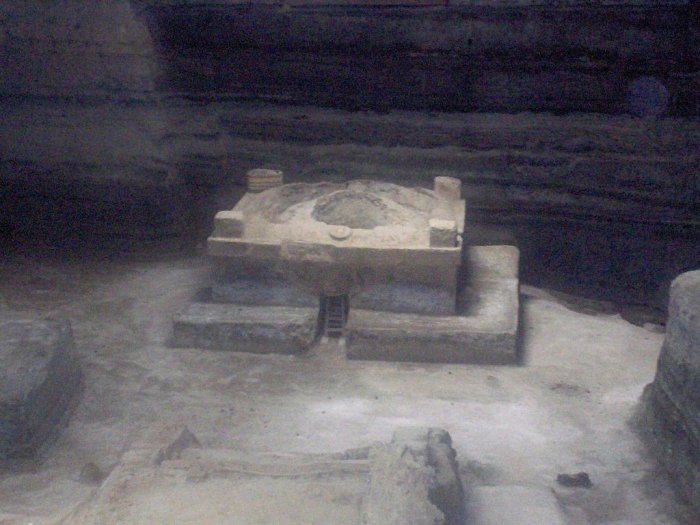Ancient Mayans Used Saunas For Healing Purposes
AncientPages.com - When the Spaniards arrived in the 16th century they discovered the ancient Maya, as well as the Aztecs were fond of sweet houses. To the ancient Maya, a sweat bath, or zumpul-ché was an important element in the purification process and the ancient saunas were often used for healing purposes.
The word Zumpul- ché can be translated as "a bath for women after childbirth and for sick persons used to cast out disease in their bodies." The most common name for the sweat house is temescal, an Aztec name from teme, to bathe, and calli, house.
Similar to a modern day sauna, sweat baths were constructed of stone walls and ceilings, with a small opening in the top of the ceiling. Water poured onto the hot rocks in the room created steam, offering a setting in which to sweat out impurities.
The saunas played an important role in the lives of the Maya people. Mothers, who had recently given birth, sought revitalization in them. Sick people visited the saunas to find healing power in sweating. Those who have been stung or wounded by any poisonous animal hoped the sauna could heal the wounds. Maya kings visited the sweat baths on regular basis because the saunas gave them the feeling of being cleaner.

Temāzcalli from the Codex Magliabecchi. Image credit: Berkeley, University of California, 1903 - Codex Magliabecchi, XIII, 11, 3.
As popular as the ancient Mayan saunas might have been the Spaniards did not approve of the sweat baths at all. It should be added that the Spaniards were not fond of any sanitation at the time. The first wife of Henry VIII, Queen of Aragon, (1485 -1536) boasted she had bathed only twice in her life, once when she was born and once when she was married.
There was also a period in history when the Spanish Inquisition was at its height. The Catholic Church did not approve of many ancient practices. Native bathing rituals, combined with worship of gods made sweat houses very offensive.
See also:
In the 16th century, a Spanish priest expressed his contempt for the native bath in this note: "This is a picture of the baths of the Indians which they call 'temazcalli.' At the door is an Indian who was the mediator for illnesses. When a sick person took a bath he offered incense, which they term copal, to his idol and stained his skin black in veneration to the idol Tezcatlipoca. Many Indians, men and women, stark naked, took thesebaths and committed nasty and vile sins within."
Later, as Spanish missionaries prevailed upon the Aztecs and Mayans to divest their baths of religious significance, the Spaniards began to appreciate what the ancient saunas had to offer.
Copyright © AncientPages.com All rights reserved. This material may not be published, broadcast, rewritten or redistributed in whole or part without the express written permission of AncientPages.com
More From Ancient Pages
-
 Ancient Humans: Clarifying The Co-Existence Between Modern Humans And Neanderthals
Archaeology | Oct 13, 2022
Ancient Humans: Clarifying The Co-Existence Between Modern Humans And Neanderthals
Archaeology | Oct 13, 2022 -
 DNA Unravels Mysteries Of The Crannogs, Ancient Artificial Islands Older Than Stonehenge
Archaeology | Oct 10, 2022
DNA Unravels Mysteries Of The Crannogs, Ancient Artificial Islands Older Than Stonehenge
Archaeology | Oct 10, 2022 -
 The 5th Century BC Gela II Wreck Linked To Orichalco Cargo Salvaged In Sicily
Archaeology | Oct 8, 2024
The 5th Century BC Gela II Wreck Linked To Orichalco Cargo Salvaged In Sicily
Archaeology | Oct 8, 2024 -
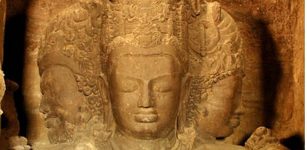 Ancient Complex Of Elephanta Caves In India
Featured Stories | Dec 27, 2016
Ancient Complex Of Elephanta Caves In India
Featured Stories | Dec 27, 2016 -
 The Phrase Hip Hip Hooray Has Ancient Roots
Ancient History Facts | Jun 6, 2018
The Phrase Hip Hip Hooray Has Ancient Roots
Ancient History Facts | Jun 6, 2018 -
 Shaka Zulu: African Hero And One Of Greatest Military Leaders Of All Time
Featured Stories | Nov 5, 2016
Shaka Zulu: African Hero And One Of Greatest Military Leaders Of All Time
Featured Stories | Nov 5, 2016 -
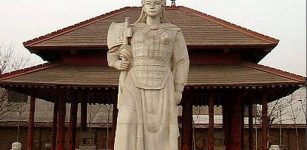 Lady Fu Hao: Brave Warrior Skilled Strategist And China’s First Female General
Featured Stories | Mar 9, 2019
Lady Fu Hao: Brave Warrior Skilled Strategist And China’s First Female General
Featured Stories | Mar 9, 2019 -
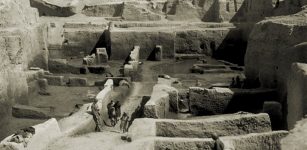 Iraq’s Ancient Kish City Survived The Great Flood – Today It’s Neglected And Lies Buried In Sand
Civilizations | Sep 24, 2015
Iraq’s Ancient Kish City Survived The Great Flood – Today It’s Neglected And Lies Buried In Sand
Civilizations | Sep 24, 2015 -
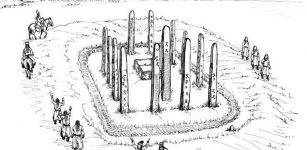 Discovery Of Ancient Sarcophagus And 14 Stone Pillars Covered With Inscriptions In Eastern Mongolia
Archaeology | Dec 22, 2017
Discovery Of Ancient Sarcophagus And 14 Stone Pillars Covered With Inscriptions In Eastern Mongolia
Archaeology | Dec 22, 2017 -
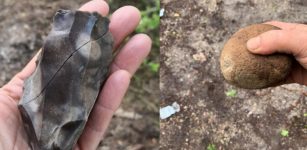 Rare Stone Age Artifacts Found In Norway Offer Evidence Of Migration From The East
Archaeology | Aug 24, 2023
Rare Stone Age Artifacts Found In Norway Offer Evidence Of Migration From The East
Archaeology | Aug 24, 2023 -
 Brain Development Differs Between Neanderthals And Modern Humans – New Study
Archaeology | Sep 5, 2022
Brain Development Differs Between Neanderthals And Modern Humans – New Study
Archaeology | Sep 5, 2022 -
 North America’s New Snake Species Deepen Our Understanding Of Reptile Social Behavior And Development
Evolution | Aug 2, 2024
North America’s New Snake Species Deepen Our Understanding Of Reptile Social Behavior And Development
Evolution | Aug 2, 2024 -
 Evidence Of Stone Age Ear and Lip Piercing Found At Boncuklu Tarla Neolithic Site In Türkiye
Archaeology | Mar 14, 2024
Evidence Of Stone Age Ear and Lip Piercing Found At Boncuklu Tarla Neolithic Site In Türkiye
Archaeology | Mar 14, 2024 -
 Anglo-Saxons Practically Eradicated Native Britons: The Question Is: Was It Ethnic Cleansing?
Archaeology | Jan 8, 2019
Anglo-Saxons Practically Eradicated Native Britons: The Question Is: Was It Ethnic Cleansing?
Archaeology | Jan 8, 2019 -
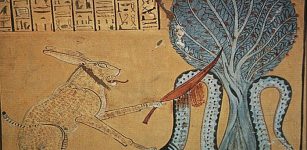 Malignant Serpent God Apophis: Symbol Of Chaos And Forces Of Darkness
Ancient Symbols | Oct 13, 2016
Malignant Serpent God Apophis: Symbol Of Chaos And Forces Of Darkness
Ancient Symbols | Oct 13, 2016 -
 Advanced Ancient Civilization’s Encounter With Primitive People Led To Something Extraordinary – Thought-Provoking Theory Suggests
Ancient Mysteries | Dec 19, 2018
Advanced Ancient Civilization’s Encounter With Primitive People Led To Something Extraordinary – Thought-Provoking Theory Suggests
Ancient Mysteries | Dec 19, 2018 -
 On This Day In History: Emperor Constantine I Passes His Famous National Sunday Law – On March 7, 321 AD
News | Mar 7, 2017
On This Day In History: Emperor Constantine I Passes His Famous National Sunday Law – On March 7, 321 AD
News | Mar 7, 2017 -
 Ancient DNA Has Traced Large-Scale Migrations Into Bronze Age Britain And The Emergence of The Celtic Language
Archaeology | Dec 30, 2021
Ancient DNA Has Traced Large-Scale Migrations Into Bronze Age Britain And The Emergence of The Celtic Language
Archaeology | Dec 30, 2021 -
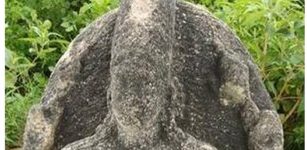 8th Century Sculpture Of Lord Vishnu Belonging To Pandya Dynasty – Unearthed
Archaeology | Sep 16, 2020
8th Century Sculpture Of Lord Vishnu Belonging To Pandya Dynasty – Unearthed
Archaeology | Sep 16, 2020 -
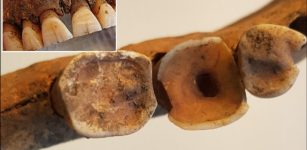 Viking Dentistry Was Surprisingly Advanced And Not Unlike Today’s Treatments
Archaeology | Dec 14, 2023
Viking Dentistry Was Surprisingly Advanced And Not Unlike Today’s Treatments
Archaeology | Dec 14, 2023


